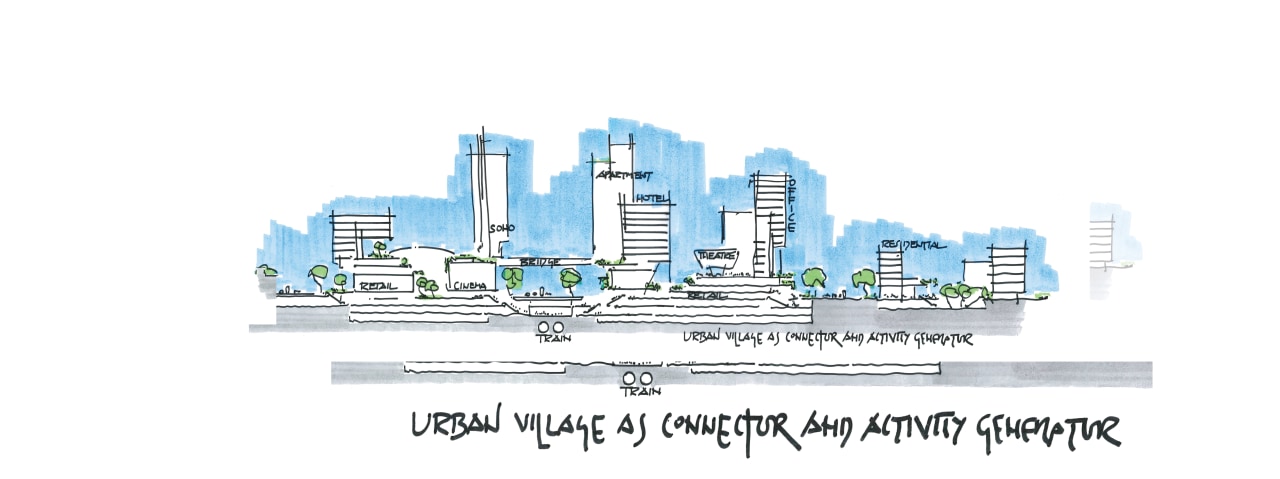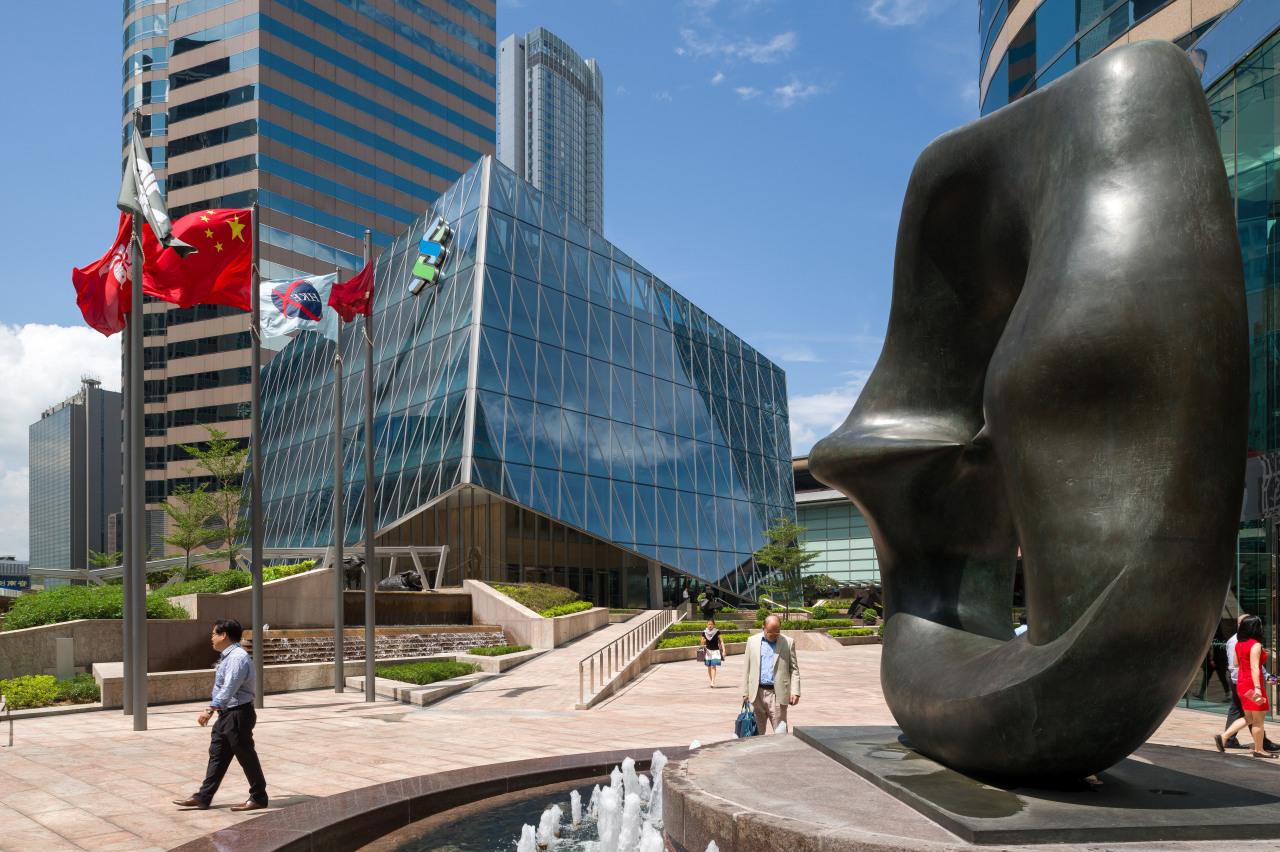Are planned city hubs the answer to time wasted commuting?
Aedas chairman Keith Griffiths proposes a different mindset to planning where people live if we want our cities to operate more efficiently

Depending on which city you live in, you or one of your friends or associates may have wasted up to three years travelling to work by the time you retire. If you could take that time back, I wonder what you would do with it?
Theoretically, you could travel to Mars and back in three years; I build many buildings in three years; you could go back to university and get a degree in three years ¦ instead of sitting in a train, car or bus.
I started my career in London a low-density city. It took me 1.5 hours from my bed to my desk every morning, and 1.5 hours back. I spent three hours a day travelling more than I spent eating and recreating. My whole life was governed by travelling.
Then I moved to Hong Kong a high-density city. It's extremely well connected. People live next to their work. The downside is they don't have much recreation space nearby. The upside is a very short travel to work less than half an hour. Only one hour a day wasted on the extremely efficient public transport system.
In the 1990s, I started working in Singapore. Singapore is also a high-density city, the same as Shanghai and Hong Kong. But it's a little more difficult to get to work, taking about one hour.
In Shanghai, it's about 1.5 hours from your bed to your desk.
So, some cities are not quite performing for us. But what do we want them to do?
In the past five years or so our lives have changed dramatically. We've been brought together by the internet and all the internet devices we use. We connect and do things quickly. We make connections we could never make before. And that's changed our lives. We've become very, very efficient.
Unfortunately, the cities we live in are not efficient. They're not keeping pace with the change. They were planned and built for a different way of life; they just cannot keep up with our new ways.
Five hundred million people have been urbanised in China in the last 20 years, so now over a half of China is urbanised. In the western world, 80% of the population is urbanised. We need to understand why people like cities, why people enjoy cities.
I believe it's about choice. I think you have many, many choices for what you do in the city. Because we have so many choices, nice things can happen all the time.
But do we all choose to live in the suburbs?
Presently in our cities, most people do live in residential suburbs. But they don't all have the same requirements.
Younger people probably want to live right in a core, where it's really buzzy, next to clubs and bars, and close enough to work that they can walk there.

If you're older and have children, you will want to be in the suburbs near to good schools. But then when you retire, you probably want to be in a connected place again.
We're all different, with different demands. So why is it that all the housing looks the same?
Something is wrong the city isn't meeting our expectations.
Most cities put housing outside of the business district so, in larger cities like London or Shanghai, it can take 1.5 hours to get to work.
We have to find a way to solve this problem.
There have been some very interesting developments recently, which include residential and serviced apartments, SOHOs, lofts, hotels, shopping centres and offices all clustered together. They are not huge, but they are live-work developments, and they are the seeds of a new way of life.
I predict that this is the way cities are going to cope with the pressures of the changing Internet generation, bringing people together into a live-work-recreation way of life.
How does that work?
Well, these city hubs as I call them are higher in density, a little bit like mini versions of Hong Kong. You have more people in there, more things going on. You work there, live there, spend your leisure time there. Young people who want to live that connected city life would leave the suburbs to be in these city hubs.
And that would create less pressure in the suburbs, which means suburbs will have more parks, more openness. It also means reduced pollution because now most of the people who live in the suburbs are no longer travelling to work.
The young, working population live in a city hub and walk to work. That's much more sustainable, and keeps people fit too.
I predict cities will develop a network of these hubs around the central business district and that network will grow naturally because the pressure of travel on the central business district will force this issue. It won't be the old type of new town', but it will be a true high-density community where everything happens in one place without the need for extensive travel.
Further out, those in the suburbs will have an even better quality of life than now, with more parks, openness, and more space for schools.
We're just starting to see the seeds of city hubs now. They exist. They're not big but they're starting to grow.

They can have elevated parks that connect buildings, so you don't have to walk down the road, or you don't have to travel by road. You can walk across the city hub at an upper level connecting all your facilities. Public rooftops are now being made available and rooftops can even be connected across buildings.
You see where this is leading.
Buildings are starting to dematerialise. They become open to the public at all levels. What's missing is the glue, the glue that holds all this together. What's going to bring all these fledgling ideas together to make the city hub, and to make the new city?
Maybe to answer that question we need to consider where the city hub will be located. It's not a matter of putting pins in a map; we have to approach this scientifically. A city hub requires connection. We all need connection. So a city hub must have a good road system and a great subway system, and be where the road system intersects with the subway system. Then you've got choice, and you've got connection.
Sounds reasonable. But what's it going to look like? All these people? All these towers? A city hub could be a crazy place.
We'll need more public space. Buildings have to become porous to people. No longer fortress-like towers, they have to be perforated and opened up between buildings, with bridges or connected rooftops. Even parks.
For example, in Hong Kong there's an elevated park connecting over 20 buildings at level four. It's an entire park system about 30m above the road.
These concepts exist. We can do it. We can make our cities become truly porous and public.
How do we start?
Those who have children, or work close to the suburb where they live, will probably want to remain in those residential areas.
But those who want to be in a live-work-recreation community will probably want to take up this city hub choice. That means them living in a smaller apartment, taking less space; walking to work; and enjoying that connected life style.
So when they come to retirement, they will know that they did not waste three years of their life.
Story by: Trendsideas
Home kitchen bathroom commercial design
Walk this way – garden pathways to lead your thinking
From farmhouse to farmstead
Bigger or smaller?
Commercial Design Trends Vol. 32/3C
Commercial Design Trends is aimed at our professional readers, and showcases commercial buildings. The book features reg...
Read More







